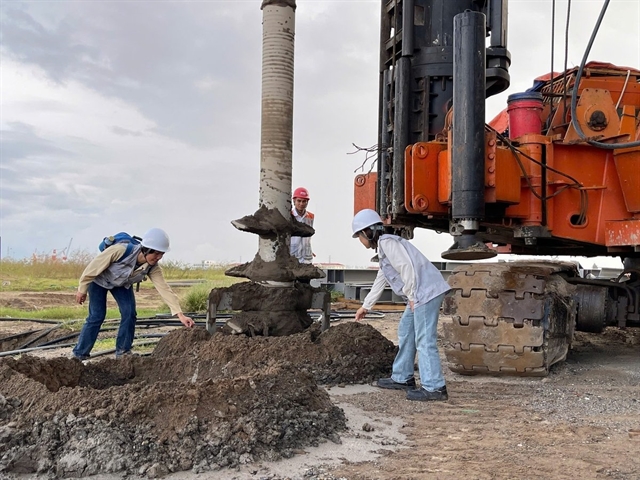
The Việt Nam Institute of Geosciences and Mineral Resources (VIGMR) has teamed up with partners from within Việt Nam and the Republic of Korea to test a new ground stabilisation material called CMD-SOIL at the Quảng Yên LPG Terminal project in Quảng Ninh Province.
The trial is taking place in Bắc Tiền Phong Industrial Park, where the soil is very weak. The ground consists of a thick layer of clay mixed with silt, and the groundwater level is shallow.
These conditions make construction difficult, especially for large port facilities, and require more advanced ground treatment solutions.
CMD-SOIL is an inorganic binding material developed to replace cement in deep mixing technology. It is made from fly ash and blast furnace slag – two types of industrial waste generated in large quantities by thermal power plants and steel factories in Việt Nam.
Korean experts from CMD Group are working with the institute to test how well it performs.
One of the most notable advantages of CMD-SOIL is its low carbon footprint. It produces around 10kg of CO2 per tonne, compared with 903kg of CO2 per tonne for traditional cement.
Early laboratory tests show that soil treated with CMD-SOIL can reach high compression strength, meeting and even exceeding the standards used for port construction projects. The material also meets environmental safety requirements, with no detected heavy metals and no acute toxicity to aquatic organisms.
CMD-SOIL is also expected to reduce construction costs. Because it uses locally available by-products, the price of the material is only around 70 to 80 per cent of conventional cement.
Dr Trịnh Hải Sơn, Director of the Việt Nam Institute of Geosciences and Mineral Resources, said CMD-SOIL has two key advantages. First, it allows the use of on-site soil, reducing transport and handling costs. Second, it has strong resistance to salt, which makes it suitable for coastal and island construction.
He added that the trial in Quảng Ninh could lead to wider application of CMD-SOIL in coastal industrial zones across Việt Nam. This would support greener infrastructure, help adapt to climate change and contribute to Việt Nam’s goal of achieving net-zero emissions by 2050.
(VNS)




